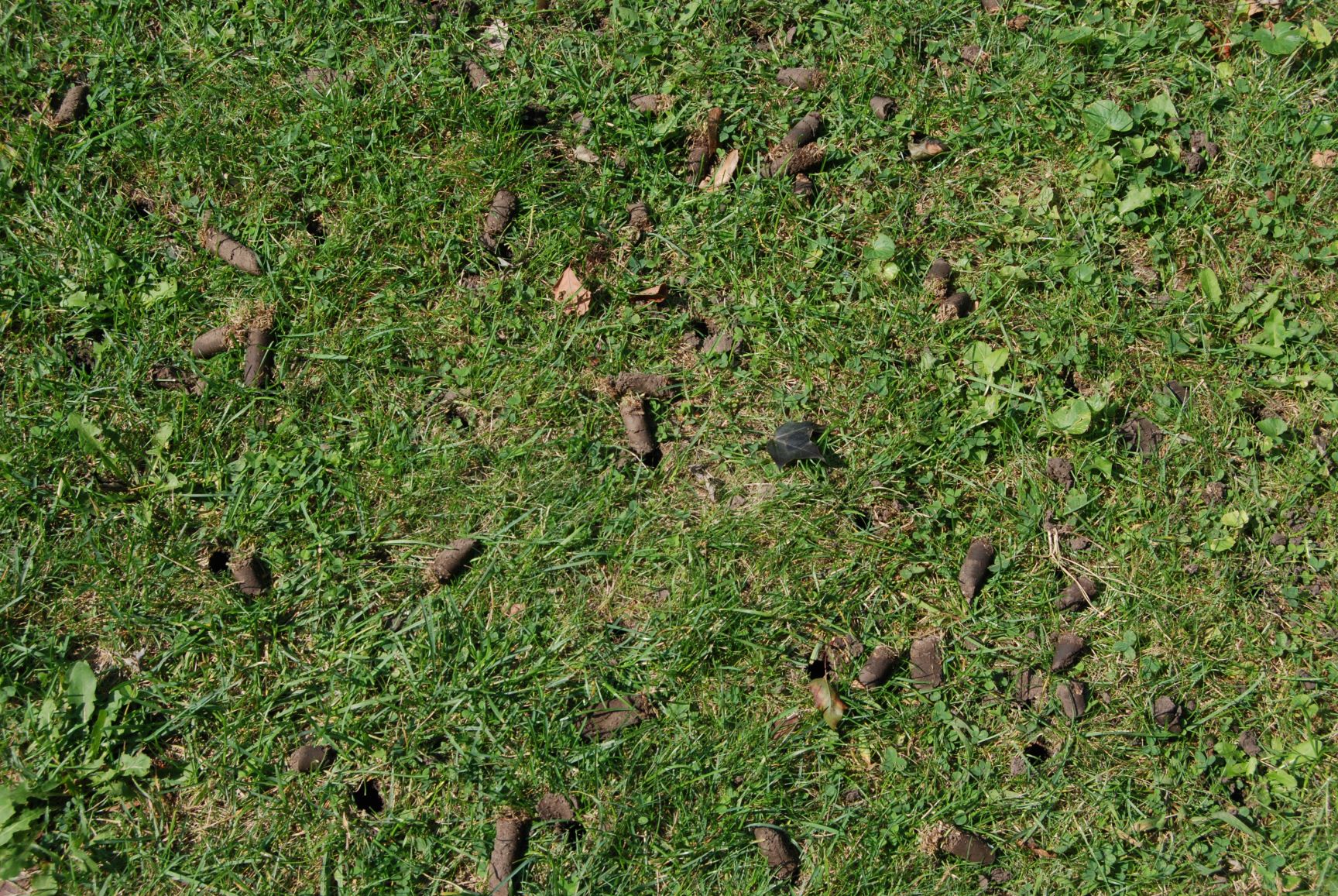
Core aeration removes soil cores and increases water, oxygen, and nitrogen movement in the soil. | Photo Credit: Janice Milanovich, Illinois-Indiana Sea Grant
A healthy lawn all year long.
September is a great time to make any desired lawn renovations, as fall is the optimal time for this.
Dates may vary by geographic location and turfgrass species. Choose practices based on your lawn’s specific needs.
Things to do in September:
- Get to know your property to better understand soil conditions, light availability, traffic patterns, and problem areas.
- Core aerate to reduce compaction, control thatch, and increase water absorption (grass should be actively growing).
- Topdress your turfgrass with compost to add organic matter.
- Water efficiently by monitoring rainfall and supplementing as needed to achieve 1 inch per week. When needed, water deeply and infrequently to encourage deep roots. Water in the mornings to reduce disease potential and conserve water by avoiding evaporation during hotter parts of the day.
- Continue to mow high to promote deep roots and crowd out weeds. Remove no more than 1/3 of the leaf blade at a time.
- Leave grass clippings on the lawn to return organic matter, nitrogen, and moisture to the soil.
- Continue to monitor for pests (e.g., weeds, insects, and diseases) twice per month.
- Fertilize low, medium, and high maintenance lawns in early to mid-September for optimum fertilization. The amount and timing of fertilizer applications should be determined by your soil test results, lawn quality, and maintenance preferences.








